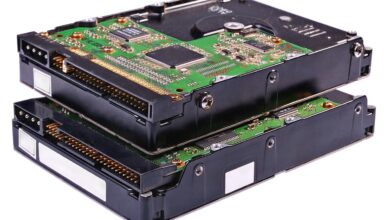AMD IS MAKING GREAT STRIDES IN AI MAY END UP MERGING WITH INTEL

AMD’s AI Ascension and Potential Intel Merger: A Transformative Industry Shift
AMD has emerged as a formidable force in the artificial intelligence landscape while speculation grows about a potential historic merger with longtime rival Intel. This development could reshape the semiconductor industry’s competitive dynamics.
AMD’s AI Progress
AMD has made remarkable strides in the AI sector, particularly with its data center GPUs. The company generated over $5 billion in revenue from its Instinct data center GPUs in 2024. The upcoming product roadmap shows aggressive expansion:
MI Series Evolution
MI325X currently in volume production
MI350 series launching mid-2025, promising 35% performance improvement
MI400 series planned for 2026, featuring integrated networking and CPU capabilities
Strategic Partnerships
Meta utilizing MI300X for its 405-billion-parameter Llama model
Microsoft implementing AMD GPUs for GPT-4-based Copilot services
Over dozen cloud service providers adopting Instinct platforms
Merger Considerations
The Biden administration has proposed a controversial plan to merge Intel’s chip design division with AMD’s corresponding departments. This proposal stems from several factors:
Strategic Rationale
Need to counter growing Chinese competition, particularly from Huawei
Strengthen US semiconductor capabilities
Combine complementary technological strengths
Leadership Structure
AMD’s CEO Lisa Su could potentially manage the combined companies
Intel’s manufacturing operations might spin out as a separate entity
Pat Gelsinger could lead the manufacturing spin-off
Market Implications
The potential merger faces several significant challenges:
Regulatory Hurdles
Combined dominance of x86 ecosystem raises antitrust concerns
Global regulatory approval required from China, UK, and France
Previous semiconductor mergers faced strict regulatory scrutiny
Technical Considerations
AMD’s Ryzen processors already match or exceed Intel’s performance
Integration of design divisions poses organizational challenges
Potential conflicts in product roadmap development
Industry Response
The semiconductor industry has reacted with mixed sentiments:
Collaborative Steps
Formation of x86 ecosystem advisory group
Joint appearances by CEOs at industry events
Shared focus on competing against ARM architecture
Market Position
AMD gaining share in data center and client segments
Intel facing challenges in AI accelerator development
Both companies confronting increased competition from ARM-based solutions
Future Outlook
The potential merger could significantly impact the semiconductor landscape:
Innovation Focus
Combined R&D capabilities
Enhanced competition against Chinese manufacturers
Accelerated AI development initiatives
Market Structure
Potential spin-off of manufacturing operations
Reformed competitive dynamics in x86 market
Increased focus on AI and advanced computing solutions
This potential merger represents a watershed moment in the semiconductor industry, reflecting both the challenges and opportunities facing American technology companies. While regulatory hurdles and organizational complexities present significant obstacles, the strategic benefits of combining AMD’s recent innovations with Intel’s established infrastructure could create a more competitive entity in the global semiconductor market.
The success of such a merger would depend largely on careful execution, regulatory approval, and the ability to maintain innovation while integrating two historically competitive organizations. As the AI computing landscape continues to evolve, this potential combination could represent a strategic response to changing market dynamics and increasing global competition.



